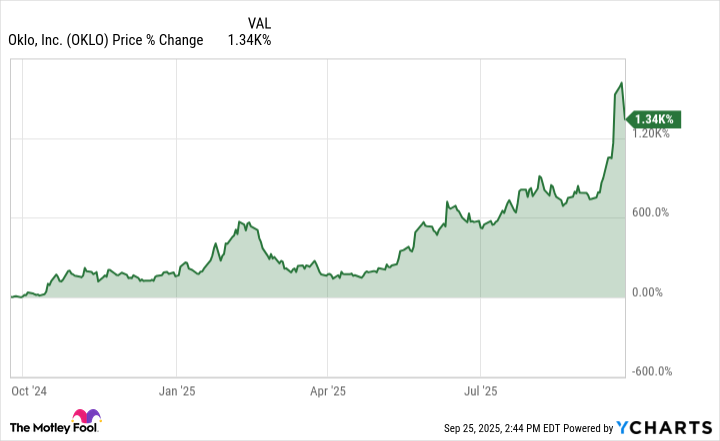Over the past three years, artificial intelligence (AI) has evolved from a trendy buzzword into a tangible driver of economic growth. While next-generation chips and breakthrough software programs often dominate the headlines, savvy investors are looking beyond the obvious use cases. A less flashy but equally critical application is emerging in the background: energy.
Let's explore the link between generative AI development and its massive power consumption. From there, I'll consider whether Oklo (OKLO +16.96%) -- a newcomer to the nuclear power revolution -- is poised to disrupt the $10 trillion buildout of AI infrastructure.

NYSE: OKLO
Key Data Points
Why is energy so important to the AI story?
Large language models (LLMs) and AI workloads are powered by clusters of chips inside massive data centers, which consume electricity on a scale on par with entire nations. The reason for this is that training advanced models requires millions of GPUs to run continuously -- placing enormous strain on energy systems. In addition, inference -- the process of actually deploying AI services at scale -- adds an ongoing layer of demand.
With that in mind, it's not surprising that traditional energy sources are struggling to keep pace with the exponential growth of AI development. Moreover, these power sources are also beginning to fall behind sustainable energy benchmarks, too.
While renewable energy will remain as part of the long-term solution, their variability can make them unreliable as a sole power source for AI's constant workloads. This is where nuclear energy enters the conversation. Nuclear offers clean, reliable baseload electricity -- exactly the type of profile that hyperscalers like Microsoft, Alphabet, Oracle, Meta Platforms, and Amazon need to support their rapid expansion of AI data centers.

Image source: Getty Images.
How is Oklo playing a role in nuclear energy?
Traditional nuclear power plants can take decades to plan with regulators while also requiring billions in upfront capital outlays before generating even a single megawatt of electricity.
Oklo has ambitions to change this approach. The company is designing compact "microreactors" that can theoretically be built and deployed far more quickly and at a fraction of the cost compared to today's mainstream solutions.
Smaller modular systems are intended to serve markets where conventional nuclear projects would be unrealistic -- such as powering large-scale AI data centers.
To support its vision, Oklo has secured early partnerships with the Department of Energy (DOE) -- a move that lends some degree of credibility in an industry where new entrants often face scrutiny or regulatory pushback.
Is Oklo stock a good buy?
Oklo's pitch to investors is straightforward. If the company can demonstrate that small-scale nuclear is both practical and commercially viable, the company could position itself to play a role in the broader clean energy transition while simultaneously capturing secular AI-driven demand tailwinds.
At first glance, this all sounds compelling. However, reality sets in when you consider that shares of Oklo have skyrocketed by 1,330% over just the past year.
But if the technology is truly disruptive, could these gains be justified? The answer is nuanced. Oklo has yet to actually deploy or sell any of its reactors. With a market capitalization of $17.5 billion, Oklo stock trades at an implied forward price-to-sales (P/S) ratio of 1,250 based on a 2027 projected revenue target of $14 million.
This valuation is, by any standard, absurd. Oklo is priced well beyond perfection -- shares are trading in a stratosphere that defies any sound financial logic and echoes past stock market bubbles.
For prudent investors, the best move is to pass on Oklo stock for now and simply monitor the company's progress. While the nuclear energy's potential role in the AI era is real and increasingly promising, there are better-positioned opportunities that capture this long-term trend.






